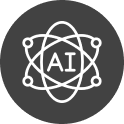RPA Implementation Tools
UiPath
UiPath: Revolutionizing Automation
Key Features of UiPath:

User-Friendly Interface
The user-friendly interface of UiPath is underpinned by the robust UiPath Studio, a development environment employing a visual programming paradigm. Through an intuitive drag-and-drop interface, users can construct automation workflows. The resulting XAML files encapsulate the logic of these workflows. This abstraction empowers business users to shape and refine automation processes without immersing themselves in the intricacies of underlying code, fostering a collaborative synergy between IT and business units.

Comprehensive Toolset
UiPath's toolset is expansive, encompassing a diverse array of activities seamlessly integrable into automation workflows. From fundamental file and data manipulation to sophisticated functions like screen scraping, OCR, and integration with AI and machine learning models, UiPath offers a comprehensive toolkit. The platform supports the creation of custom activities using languages such as C# or VB.NET, affording developers the flexibility to extend its capabilities to meet specific automation requirements.

End-to-End Automation
UiPath achieves end-to-end automation through the integration of UiPath Orchestrator, a web-based management console. Orchestrator facilitates the scheduling, monitoring, and management of automated processes across multiple machines. Supporting both attended and unattended automation, UiPath ensures the seamless automation of individual tasks and complete business processes. UiPath Robots, responsible for task execution, can be deployed on virtual machines or physical servers, providing flexibility to cater to diverse automation scenarios.

Visual Workflow Design
UiPath's visual workflow design leverages Microsoft Workflow Foundation within the .NET ecosystem. The graphical representation in UiPath Studio combines activities, sequences, and flowcharts to articulate the logic of automation processes. Each activity corresponds to specific actions, enhancing transparency in understanding automation workflows. Debugging tools and real-time variable inspection further assist in the development and troubleshooting of intricate workflows.

Integration Capabilities
UiPath's integration capabilities span a broad spectrum of systems and applications. Offering out-of-the-box connectors for popular applications, APIs, and databases, UiPath also allows invocation of external scripts and applications for seamless integration with legacy systems. Support for RESTful API calls ensures fluid communication with external systems. This flexibility ensures UiPath can be seamlessly integrated into existing IT landscapes, unlocking the benefits of automation without disrupting established workflows.

Scalability and Performance
UiPath's modular architecture addresses scalability challenges. Supporting the deployment of multiple robots organized into groups, the platform scales horizontally to manage increased workloads. UiPath Orchestrator efficiently distributes work among robots, and performance monitoring tools offer insights into process execution, enabling organizations to optimize resource allocation. Load balancing features ensure even distribution of automation tasks, preventing bottlenecks and enhancing overall efficiency as the automation initiative expands.
Future Integration and Trends:
UiPath continues to evolve by integrating Artificial Intelligence (AI) and Machine Learning (ML) into its platform. This convergence enhances the cognitive capabilities of UiPath’s software robots, enabling them to handle more complex tasks and adapt to dynamic scenarios.
Why Choose UiPath:
When selecting UiPath as your RPA solution, you gain access to a platform that combines advanced technical capabilities with a commitment to understanding and achieving your organizational goals. UiPath’s proven track record, coupled with its dedication to excellence, positions it as a strategic partner in your journey towards operational excellence through automation.
In a landscape where technology transforms industries, UiPath stands as a beacon of innovation, empowering businesses to thrive in the era of intelligent automation
Power Automation in Robotic Process Automation (RPA):
Introduction to Power Automation
Key Features of Power Automation:

Connectivity
Power Automation establishes connectivity through a spectrum of RESTful APIs, enabling seamless interaction with a diverse array of applications and services. This includes native integration with Microsoft 365, SharePoint, Dynamics 365, and a plethora of third-party platforms through standardized protocols. The platform's connectors are engineered to encapsulate intricate API interactions, ensuring robust and consistent communication. This extensive connectivity empowers organizations to orchestrate end-to-end automation scenarios encompassing a wide spectrum of business processes.

No-Code/Low-Code Environment
Operating within a no-code/low-code paradigm, Power Automation leverages a sophisticated abstraction layer. This layer is built upon a foundation of declarative programming, allowing users to configure automation tasks through a visual interface. Beneath this abstraction, Power Automation generates JSON-based scripts that encapsulate the logic of the configured tasks. The platform's extensibility allows users to seamlessly transition between no-code and low-code approaches, catering to both citizen developers and IT professionals with coding expertise.

Templates and Triggers
Power Automation's template repository is underpinned by Microsoft Power Platform's Common Data Model (CDM). Templates, represented in JSON format, encapsulate pre-built workflows for various business scenarios. Triggers, crucial in initiating automation, are event-driven mechanisms that are managed through Azure Event Grid integration. Power Automation supports diverse triggers, including HTTP requests, scheduled intervals, and external inputs. The flexibility of trigger configurations ensures that automation tasks can be seamlessly orchestrated based on the specific needs of the business processes.

Integration with AI Services
Power Automation leverages Microsoft's Azure AI services to integrate advanced functionalities into automated processes. Through RESTful APIs, the platform interfaces with Azure Cognitive Services, encompassing natural language processing (NLP), sentiment analysis, and image recognition. The integration is facilitated through OAuth for secure authentication and RESTful endpoints for data exchange. This infusion of AI capabilities enhances the decision-making prowess of automated workflows, enabling them to intelligently process unstructured data and adapt to dynamic inputs.
Key Features of Power Automation:
1. End-to-End Process Automation:
2. Collaborative Workflows:
3. Cloud-Based Integration:
4. Data Flow and Transformation:
Use Cases for Power Automation in RPA:
Document Approval Workflows:
Data Synchronization Across Platforms:
Notification and Alert Systems:
Social Media Monitoring and Engagement:
Benefits of Power Automation in RPA:

1. Enhanced Flexibility:
Power Automation's cloud-based architecture introduces a layer of adaptability to RPA processes. Leveraging cloud infrastructure, it enables dynamic scaling of resources based on demand. The underlying infrastructure as a service (IaaS) and platform as a service (PaaS) components facilitate the rapid provisioning of computational resources, allowing organizations to swiftly adjust to fluctuations in business requirements. Furthermore, Power Automation seamlessly integrates with various cloud services, enhancing its capability to adapt to evolving technology landscapes.

2. User Empowerment:
The no-code/low-code environment in Power Automation is built upon a robust underlying architecture that abstracts complexities while maintaining extensibility. This empowers a diverse range of users, including business analysts and subject matter experts, to actively engage in the automation process. Power Automation achieves this by encapsulating intricate workflows into pre-built modules and reusable components. The platform's extensibility ensures that even users with limited coding expertise can contribute effectively to automation initiatives, thereby broadening the scope of automation across the organization.

3. Scalability:
Power Automation, seamlessly integrated with RPA, augments the scalability of automation endeavors. The platform's architecture is designed to handle an increasing volume of automated processes. Leveraging a combination of distributed computing and containerization, Power Automation supports the scaling of automation processes horizontally. This ensures that as the demand for automated tasks grows, the platform can efficiently distribute workloads across multiple instances, maintaining optimal performance and responsiveness.

4. Improved Collaboration:
Power Automation's collaborative features are underpinned by its integration with cloud-based collaboration tools and version control systems. The platform leverages modern distributed version control systems, enabling teams to collaboratively develop and manage automation workflows. Real-time collaboration is facilitated through synchronized access to shared workflows, allowing teams across different departments to work concurrently on the same processes. Additionally, role-based access controls enhance security, ensuring that the right personnel have appropriate levels of access to automation assets.

What We Do:
Our array of RPA solutions is meticulously designed to address your specific business needs, whether it involves automating routine and time-consuming tasks, streamlining intricate and multifaceted processes, or enhancing the management of critical data assets. Our commitment is unwavering in our mission to enhance your operational efficiency while ensuring a substantial return on investment. At LTS, we seamlessly combine industry expertise with cutting-edge technology, enabling your organization to thrive in an era where automation is integral to achieving operational excellence.
Why LTS:
Our team is distinguished not only by its advanced technical competencies but also by an unswerving dedication to the realization of your organizational goals. Our demonstrated track record underscores our consistent delivery of exceptional outcomes to a diverse clientele. Endorsements and feedback from numerous contented clients further validate the superior quality of our services.
By selecting LTS as your partner for RPA requirements, you gain access to the transformative capabilities of automation, underpinned by a framework of technical expertise, precision, and an unwavering commitment to achieving your operational objectives.

